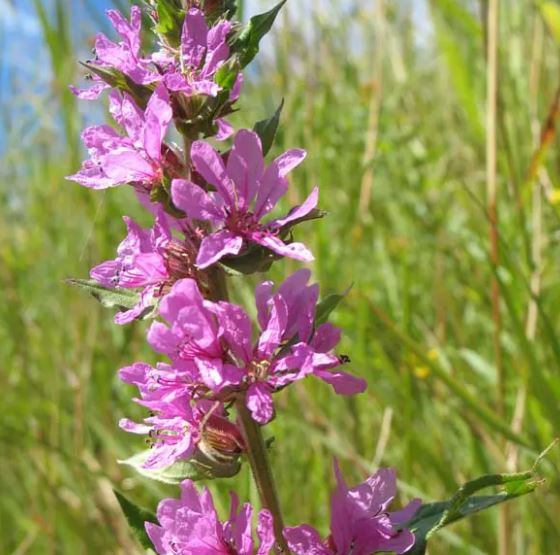Weedy Wednesday - Purple Loosestrife
Wednesday, July 24, 2024
Have you admired the striking purple loosestrife? Its tiny purple flowers bloom from the bottom to the top of the stalk, creating a mesmerizing display that conceals its harmful nature. Though beautiful, this perilous plant is listed as Prohibited Noxious on the Alberta Weed Control Act, meaning all parts of the plant must be destroyed.
Purple loosestrife can be found in moisture laden soils like marshes, ditches, natural waterways, and irrigation canals. It thrives in environments saturated with fertilizer runoff and even tolerates shallow flooding and partial shade.
Propagation of the plant is incredibly fast as new seedlings emerge from the central taproot every year, and even the smallest stem or root fragment can ignite a rampant invasion. In wetlands, the aggressive growth of this plant destroys wetlands by strangling out native plants, completely disrupting water flow and affecting nesting habitat for waterfowl.
Once an infestation has taken hold, purple loosestrife is a formidable adversary. Grazing, mowing or cultivating will make it worse by dispersing seeds and root fragments. For mild infestations, the best defence is to cut off seed heads into a plastic bag to prevent dispersal. After the heads are cut off it is important to try removing as much of the plant as possible and disposing all parts of the plant away from the water.
For more severe infestations, glyphosate herbicide can be an effective control, however, it is important to remember all vegetation sprayed with this product will be killed which can create further weed problems. More importantly, when herbicide is applied near a wetland, special use permits are required. Hiring a contractor who has access to selective herbicides and can apply for these permits may be the most effective in these situations.
Overall prevention is the best solution for managing purple loosestrife. Vigilant monitoring of potential habitats and prompt removal of any emerging plants is crucial in prevention. Despite occasional availability for sale, it is imperative to recognize and treat this invasive species and therefore do not purchase or plant it.
Be careful not to mistake purple loosestrife with native plants that share the name "loosestrife" but are unrelated to this invasive species. Liatris sp., a garden plant, is occasionally confused with Purple loosestrife due to its dense flower clusters and slender, thread-like petals. Another frequent misidentification is with native Fireweed, distinguished by its four petals and round stem, in contrast to purple loosestrife, which features 5-7 petals and a square stem.
Want to learn more about purple loosestrife? The Alberta Invasive Species Council and Rocky View County both have fact sheets available on their websites for Purple loosestrife and many more.
Use a guide like the one provided by the Association of Alberta Agricultural Fieldmen (AAAF) to make sure you take out the right pesky plants.


Pump house and water control structure at Montezuma National Wildlife Refuge in central New York (1968) prior to Purple loosestrife.

Montezuma National Wildlife Refuge ten years later, purple loosestrife had displaced native food and cover plants in the waterway surrounding.
Posted in:
Agriculture